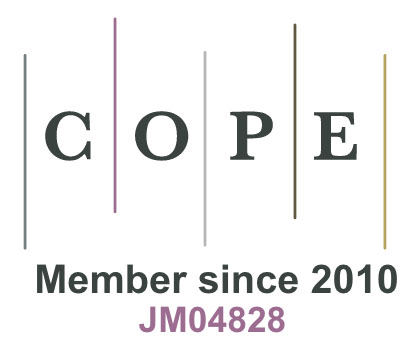Common roadblocks to publishing, and how to overcome them
Over the years I have had occasions to answer many questions related to success in publishing scholarly manuscripts. There are occasional unique issues that prospective authors face, but mostly people experience very similar challenges. Take heart — most of these challenges can be overcome! Here is a summary of common roadblocks, and how to overcome them!
- Failing to follow the journal guidelines. Success in publishing in any journal depends to a large extent on your preparation related to that journal. Read the “Information for Authors” that all journals provide, and follow it as closely as possible. The ANS guidelines are readily accessible on the ANS home page. Pay particular attention to the purpose of the journal, and make sure that your manuscript is in line with that purpose. If you have questions about the guidelines, do not hesitate to contact the journal editor!
- Lack of familiarity with the journal. Become familiar with the past 2 to 3 years of the journal content to know the kinds of articles they are publishing, and to identify possible gaps that your manuscript might fill. Notice the style of writing in the published articles, typical article length, and the typical “profile” of article style and format. Identify the audience that the journal reaches, and if that is the audience for which your manuscript is intended. Notice if the journal has published articles on your topic in the past several months, and if so, consider how your work can add to what has already appeared in the journal. The author’s guidelines probably address some of the style and format issues, but you will get a greater familiarity with the “personality” of the journal if you do this bit of homework!
- Knowing when to get editorial assistance. If you have difficulty with composition, challenges with the English language, or specific writing challenges (for example, improving the logical flow of ideas or making a long manuscript shorter), do not hesitate to seek help. Consider teaming up with a colleague to exchange feedback on your writing, and to get suggestions for improving your writing. There are a number of excellent professional resources that you can explore; we list a few in the ANS guidelines in the “Preparation of Manuscript” section.
- Becoming discouraged. Often the accomplishment of preparing a manuscript and getting it submitted is a major undertaking, and to get back a rejection letter after all that hard work is truly discouraging. However, you can prepare
 yourself for this disappointment by taking steps to be ready for any outcome. Have a second and third journal option in the wings from the outset, so that if you need to submit your manuscript to a different journal you are ready to do so from the beginning. Also, be ready to make revisions based on reviewer comments. I recommend that authors immediately develop a table containing all of the reviewer comments in one column, and a second column with notes about what to do to address the comments. Be prepared to tackle revisions the day after you receive the editor’s decision letter! Do not put it aside and wait … be persistent, and get right back into the task of moving the manuscript forward!
yourself for this disappointment by taking steps to be ready for any outcome. Have a second and third journal option in the wings from the outset, so that if you need to submit your manuscript to a different journal you are ready to do so from the beginning. Also, be ready to make revisions based on reviewer comments. I recommend that authors immediately develop a table containing all of the reviewer comments in one column, and a second column with notes about what to do to address the comments. Be prepared to tackle revisions the day after you receive the editor’s decision letter! Do not put it aside and wait … be persistent, and get right back into the task of moving the manuscript forward!
There are factors beyond your control that could lead to rejection of your manuscript. But you can take some steps to minimize the possibility that these factors will interfere with your being published. These include:
- Space constraints that limit the inclusion of all worthy manuscripts. All journals have some space constraints, so the more you keep your manuscript within reasonable length requirements, the greater your chances of success.
- Editorial priorities that do not include the topic that your manuscript addresses. Sometimes you can determine these priorities in advance. Seek publication in a journal that you know includes a priority for your topic, or contact the Editor to determine if they have an interest in your topic.
- Editorial perspectives and practices related to controversial or sensitive issues. If your topic involves a controversial or sensitive issue, you may seek to determine the journal’s stance related to your topic in advance by becoming familiar with recent journal content, or direct contact with the Editor.
If you heed these hints for overcoming obstacles, you will almost certainly get your work published! If you have questions or other suggestions to add to mine here, post them as a comment and let us discuss them!



 to their constituents as PDF files, replacing the old, large, and very popular “copy machine” room housed in their physical spaces. A natural extension of this is the use of material “published” on the web as a resource not unlike that accessed through an academic library.
to their constituents as PDF files, replacing the old, large, and very popular “copy machine” room housed in their physical spaces. A natural extension of this is the use of material “published” on the web as a resource not unlike that accessed through an academic library.




